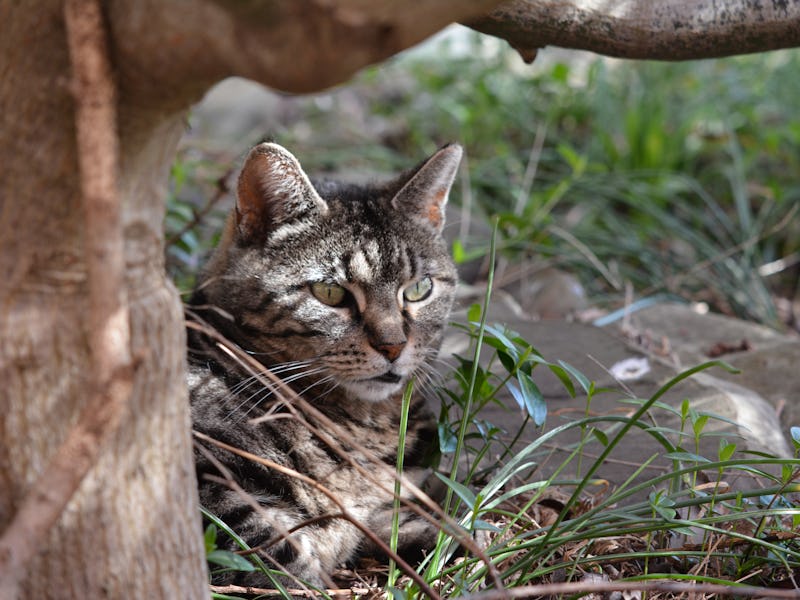Google's Cats Grew Up to Be Alleged Killers
Scientists don't what to do with these homeless cats.

It’s not easy to resist a cute cat, even if you know it’s a feral murderer with a taste for blood. This inability to withstand feline charms recently got Google employees in Silicon Valley in trouble with local conservationists: Noticing many feral cats in the area around the campus, the well-meaning Googlers created GCat Rescue, a group devoted to protecting, feeding, and neutering the free-roaming cats. Environmentalists, finding evidence that these cats want something a bit bloodier than free food, don’t think protecting them is the best idea.
As the New York Times reported on Saturday, these cared-for feral cats are now so well-cared for that they’re suspected of roaming beyond the Google Mountain View campus that they call home into nearby Shoreline Park, a 750-acre refuge that’s home to the burrowing owl, a species of “special concern.” Burrowing owls, by nature, lay their eggs in the ground, leaving them especially vulnerable to feline predators. Sad clumps of owl feathers and bird bones discovered in the refuge have pointed an accusatory finger at the feral cats.
The wetlands near Google's Mountain View campus are home to many species that may be vulnerable to feral cat colonies.
The point of GCat Rescue and its TNR (trap-neuter-release) strategy is to prevent these feral cats from reproducing and creating an even greater burden on wildlife and public health. At the same time, GCat Rescue has set up feeding stations for the cats in an attempt to help ease the burden of hunting. Here’s how GCat Rescue explains its mission:
Neutered cats cannot reproduce so the population goes down as the cats age naturally. Neutering and colony care also stop nuisance behaviors like fighting, screaming, spraying, roaming, hunting, etc. TNR ultimately is a smart solution that requires a fraction of the cost of antiquated and ineffective animal control methods.
Burrowing owls lay their eggs on the ground, making them especially vulnerable to hungry cats.
But, as Travis Longcore, Ph.D., a researcher at the University of Southern California told The New York Times, “Cats that are fed still hunt. Even neutered cats and spayed cats hunt.” Even the animal-protection agency PETA has pointed out that caring for feral cat colonies does not actually enhance their well-being, as there’s plenty of evidence that cats in the wild are more injury prone and vulnerable to illness. Furthermore, some argue that it makes pet owners feel better about abandoning their cats to know that someone else will take care of them.
One effective alternative to TNR is to euthanize the feral cats, but for obvious reasons, many cat lovers aren’t crazy about this idea. Nevertheless, it may actually be the more humane thing to do. “Homeless cats deserve to be treated like any other cat,” wrote PETA senior vice president of cruelty investigations Daphna Nachminovitch in a blog for National Geographic in 2017. “They deserve a chance to be adopted into a loving home or, if that isn’t possible, to be peacefully euthanized in a safe and quiet environment, rather than turned out onto the street to fight daily battles for survival that they will ultimately lose.”
Like all things involving cats, this debate is as emotional as it is scientific. It remains to be seen whether GCat Rescue will disband — or whether a handful of broken bird bones will be enough to convince them of the cats’ culpability.